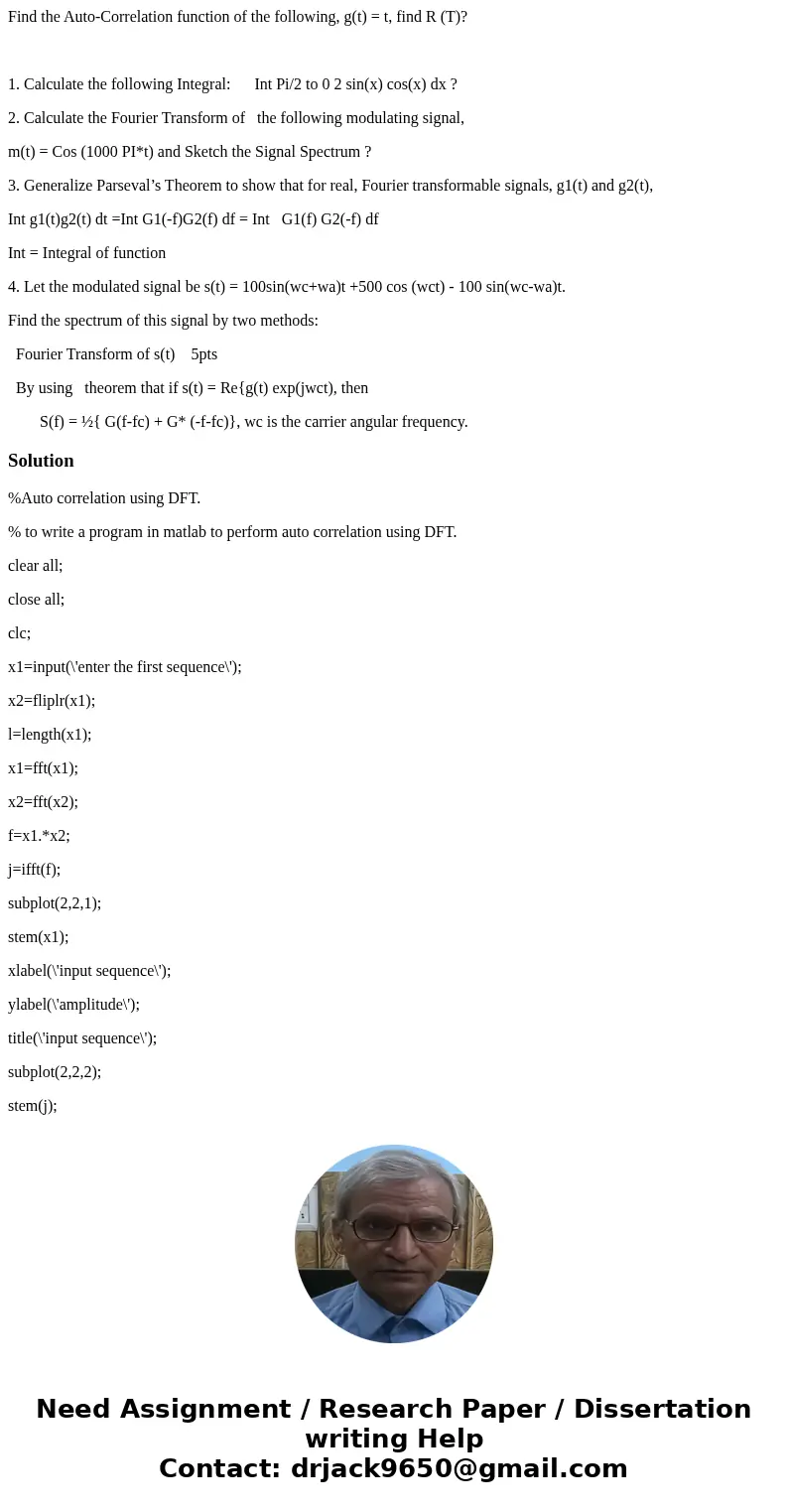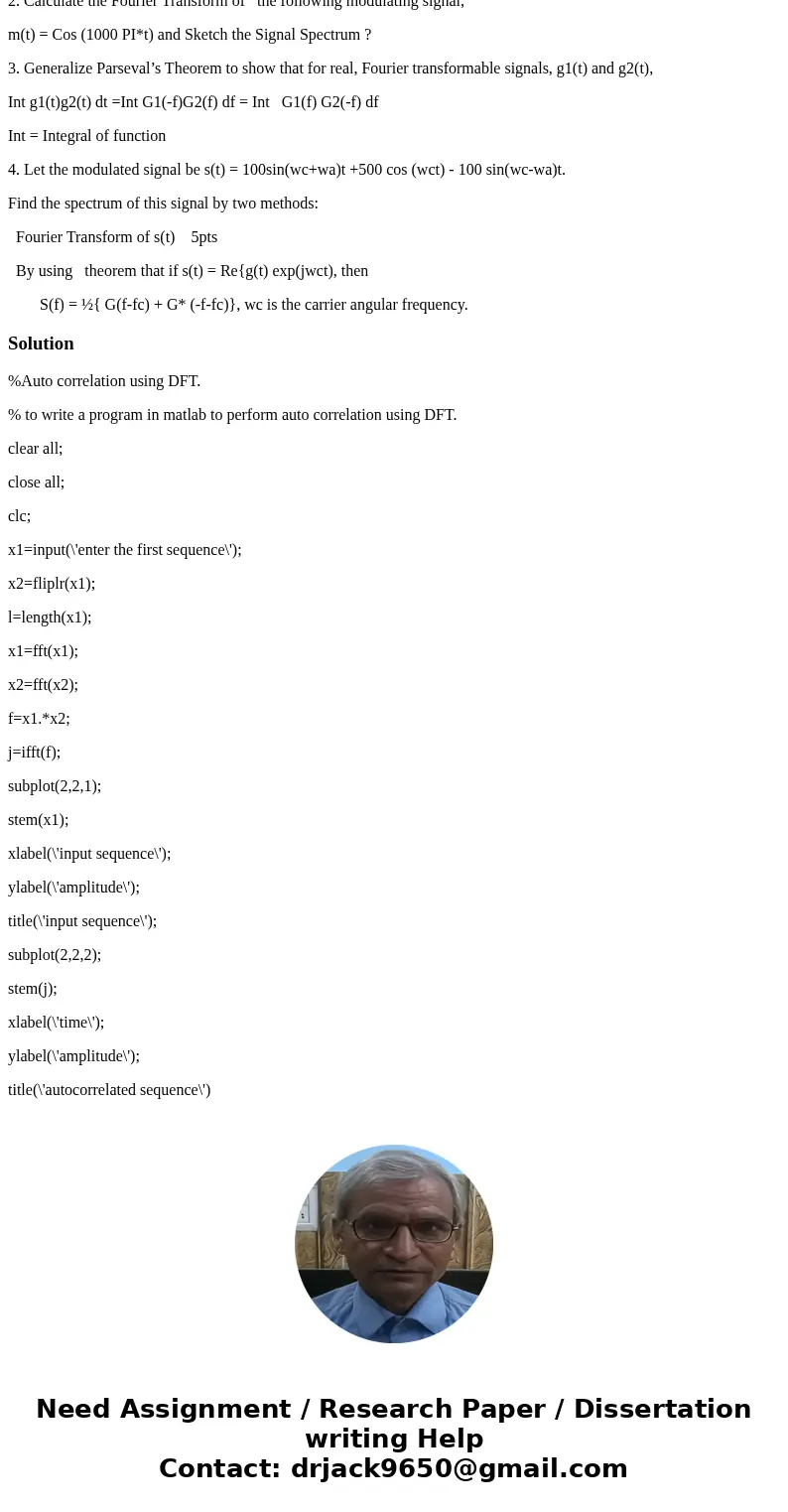Find the AutoCorrelation function of the following gt t fin
Find the Auto-Correlation function of the following, g(t) = t, find R (T)?
1. Calculate the following Integral: Int Pi/2 to 0 2 sin(x) cos(x) dx ?
2. Calculate the Fourier Transform of the following modulating signal,
m(t) = Cos (1000 PI*t) and Sketch the Signal Spectrum ?
3. Generalize Parseval’s Theorem to show that for real, Fourier transformable signals, g1(t) and g2(t),
Int g1(t)g2(t) dt =Int G1(-f)G2(f) df = Int G1(f) G2(-f) df
Int = Integral of function
4. Let the modulated signal be s(t) = 100sin(wc+wa)t +500 cos (wct) - 100 sin(wc-wa)t.
Find the spectrum of this signal by two methods:
Fourier Transform of s(t) 5pts
By using theorem that if s(t) = Re{g(t) exp(jwct), then
S(f) = ½{ G(f-fc) + G* (-f-fc)}, wc is the carrier angular frequency.
Solution
%Auto correlation using DFT.
% to write a program in matlab to perform auto correlation using DFT.
clear all;
close all;
clc;
x1=input(\'enter the first sequence\');
x2=fliplr(x1);
l=length(x1);
x1=fft(x1);
x2=fft(x2);
f=x1.*x2;
j=ifft(f);
subplot(2,2,1);
stem(x1);
xlabel(\'input sequence\');
ylabel(\'amplitude\');
title(\'input sequence\');
subplot(2,2,2);
stem(j);
xlabel(\'time\');
ylabel(\'amplitude\');
title(\'autocorrelated sequence\')


 Homework Sourse
Homework Sourse